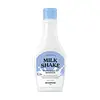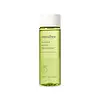What's inside
What's inside
 Key Ingredients
Key Ingredients

No key ingredients
 Benefits
Benefits

 Concerns
Concerns

 Ingredients Side-by-side
Ingredients Side-by-side

Water
Skin ConditioningCyclopentasiloxane
EmollientCocos Nucifera Oil
MaskingGlycerin
HumectantHexylene Glycol
Emulsifying1,2-Hexanediol
Skin ConditioningSodium Chloride
MaskingCaprylyl/Capryl Glucoside
CleansingLauryl Methyl Gluceth-10 Hydroxypropyldimonium Chloride
Coco-Caprylate/Caprate
EmollientDipotassium Phosphate
BufferingDisodium EDTA
Ethylhexylglycerin
Skin ConditioningPotassium Phosphate
BufferingPyrus Malus Seed Oil
EmollientCaprylic/Capric Triglyceride
MaskingPyrus Malus Fruit Extract
Skin ConditioningButylene Glycol
HumectantTocopherol
AntioxidantWater, Cyclopentasiloxane, Cocos Nucifera Oil, Glycerin, Hexylene Glycol, 1,2-Hexanediol, Sodium Chloride, Caprylyl/Capryl Glucoside, Lauryl Methyl Gluceth-10 Hydroxypropyldimonium Chloride, Coco-Caprylate/Caprate, Dipotassium Phosphate, Disodium EDTA, Ethylhexylglycerin, Potassium Phosphate, Pyrus Malus Seed Oil, Caprylic/Capric Triglyceride, Pyrus Malus Fruit Extract, Butylene Glycol, Tocopherol
 Reviews
Reviews

Ingredients Explained
These ingredients are found in both products.
Ingredients higher up in an ingredient list are typically present in a larger amount.
1,2-Hexanediol is a synthetic liquid and another multi-functional powerhouse.
It is a:
- Humectant, drawing moisture into the skin
- Emollient, helping to soften skin
- Solvent, dispersing and stabilizing formulas
- Preservative booster, enhancing the antimicrobial activity of other preservatives
Cyclopentasiloxane, or D5, is a silicone used to improve texture of products and trap moisture.
D5 is considered lightweight and volatile. Volatile means it evaporates quickly after application. Once evaporated, D5 leaves a thin barrier that helps keep skin hydrated.
It is also an emollient. Emollients help soften the skin and prevent water loss. Silicones create a silky texture in products. D5 helps other ingredients become more spreadable.
Studies show D5 is safe to use in skincare products. We recommend speaking with a skincare professional if you have concerns.
Learn more about CyclopentasiloxaneEthylhexylglycerin (we can't pronounce this either) is commonly used as a preservative and skin softener. It is derived from glyceryl.
You might see Ethylhexylglycerin often paired with other preservatives such as phenoxyethanol. Ethylhexylglycerin has been found to increase the effectiveness of these other preservatives.
Chances are, you eat sodium chloride every day. Sodium Chloride is also known as table salt.
This ingredient has many purposes in skincare: thickener, emulsifier, and exfoliator.
You'll most likely find this ingredient in cleansers where it is used to create a gel-like texture. As an emulsifier, it also prevents ingredients from separating.
There is much debate on whether this ingredient is comedogenic. The short answer - comedogenic ratings don't tell the whole story. Learn more about comegodenic ratings here.
The concensus about this ingredient causing acne seems to be divided. Research is needed to understand if this ingredient does cause acne.
Scrubs may use salt as the primary exfoliating ingredient.
Learn more about Sodium ChlorideWater. It's the most common cosmetic ingredient of all. You'll usually see it at the top of ingredient lists, meaning that it makes up the largest part of the product.
So why is it so popular? Water most often acts as a solvent - this means that it helps dissolve other ingredients into the formulation.
You'll also recognize water as that liquid we all need to stay alive. If you see this, drink a glass of water. Stay hydrated!
Learn more about Water